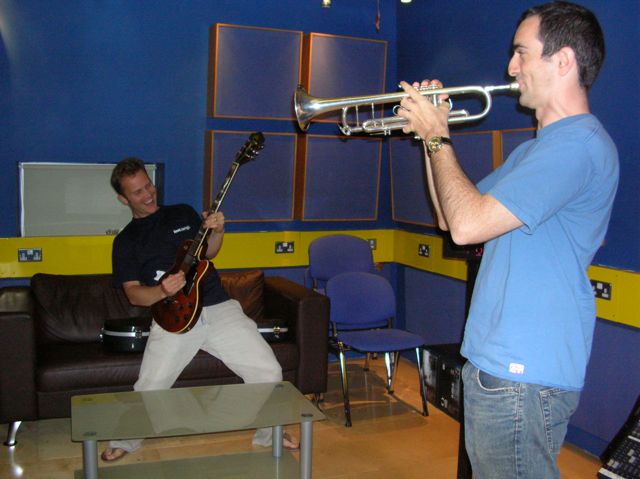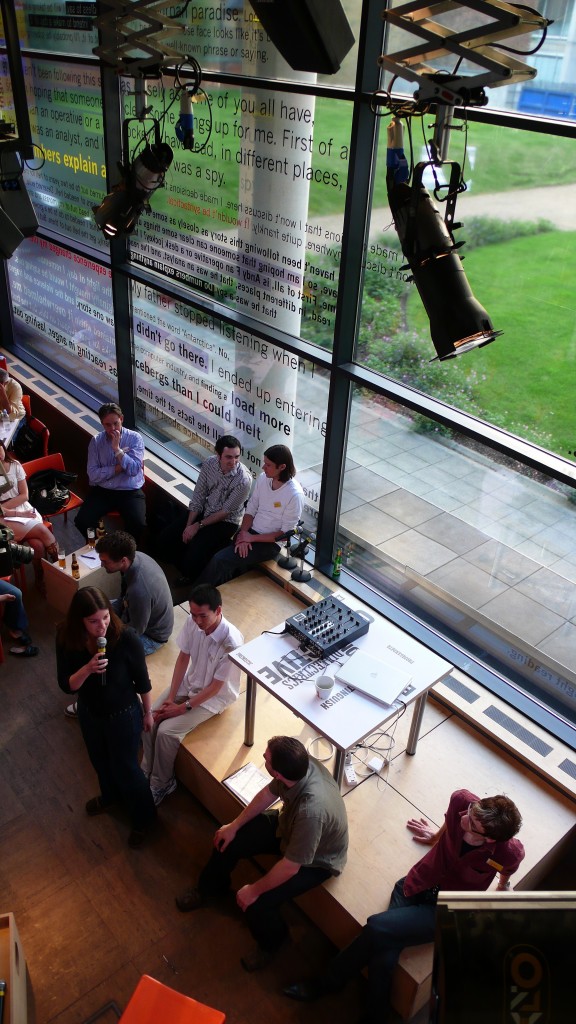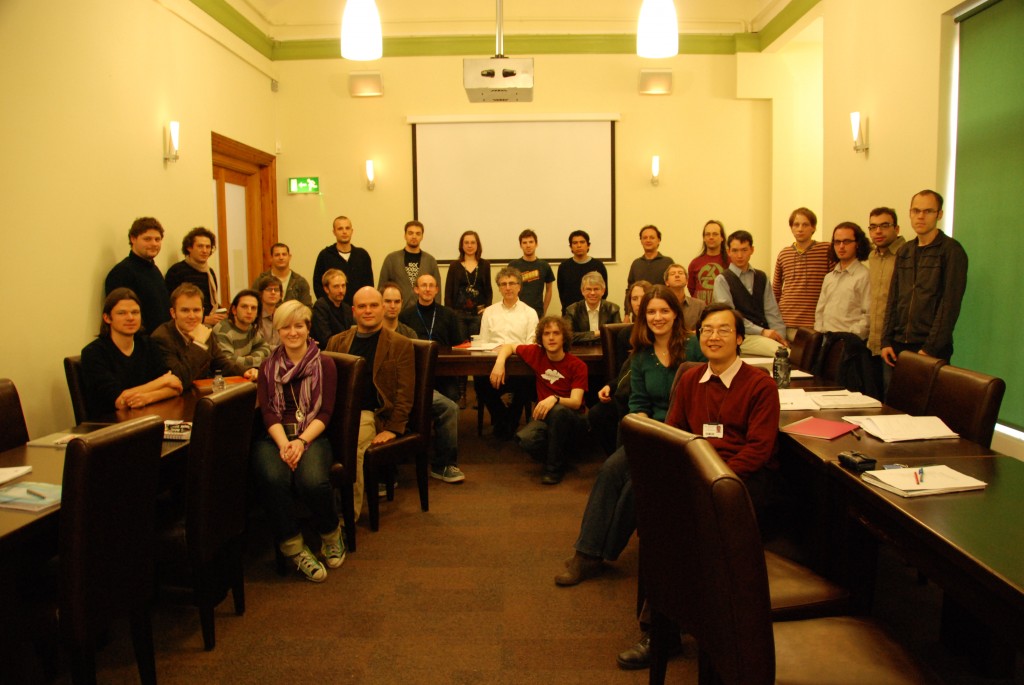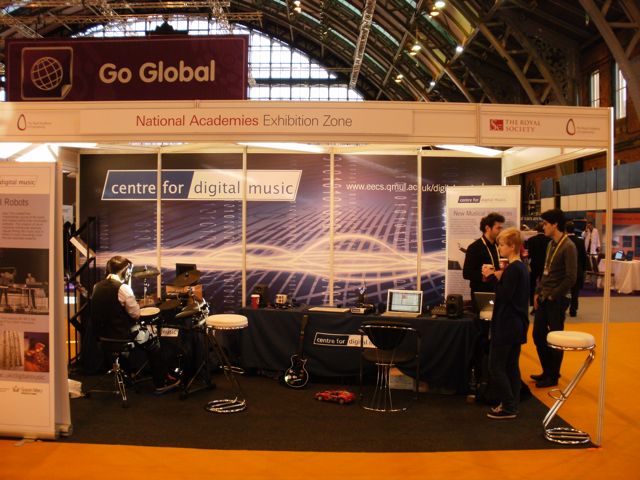My brain hurt like a warehouse, it had no room to spare
I had to cram so many things to store everything in there
Five years ago, well a couple weeks shy of five years, I began my PhD research under the supervision of Mark Sandler at the Centre for Digital Music (C4DM) in what was then the Department of Electronic Engineering at Queen Mary, University of London. We were a group of 30 or so researchers spread across two offices with a shiny new Listening Room to use in our research.
Now we’re something closer to 60 researchers associated with the group spread across four offices (once the construction dust is settled on the new office space). We are also now a part of the School of Electronic Engineering and Computer Science and within qMedia. Along with the Listening Room is a new Control Room and Performance Lab to be used with the Media Arts and Technology doctoral training centre.

Yves and Matthias in the Listening Room in April 2007. Not many people know this, but Yves is a particularly talented trumpeter.
This September will commemorate 10 years of C4DM as a research group, and it will be the first September since 2005 that I will not be a researcher within it. I submitted my PhD thesis in July 2010 and have been a postdoctoral research assistant since then. It’s been an amazing time, but universities need turnover – they thrive on a continuous flow of new people with new talents and passions – so it is time to move on.

Presentations on music information retrieval to the public at the Dana Centre as part of the OMRAS2 project in 2008. Photo taken by Elaine Chew.
I’m not going very far (in fact I’ll be back tomorrow for a meeting), but it still feels like a significant change. I’m not ready to publicly announce my next steps, but I’m happy to talk with you in person about what exciting things I will be up to past August. I’ll be talking about my new venture at the C4DM 10th Anniversary Event: Past, Present and Future, so come along to that! Even if you’re not bothered about what I’ll be up to, come along anyway! There’s also an evening event.
Goodbye, C4DM!

